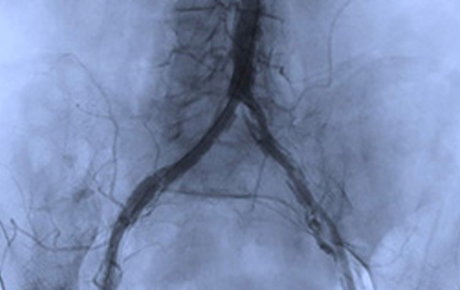

An angioplasty, otherwise known as a percutaneous transluminal angioplasty (PTA) is a nonsurgical procedure used to open blocked arteries caused by peripheral artery disease (PAD). An angioplasty is performed to restore arterial blood flow to the tissue without the need for open surgery. During an angioplasty, a special catheter (long hollow tube) is inserted into the artery to be treated, and a balloon at its tip is inflated to displace the obstructing tissue. A stent may be implanted to prop artery open.
Aneurysms or dissections of the aorta or arteries can be repaired without open surgery.
If high blood pressure is caused by blockage of blood flow to the kidneys, interventional radiologists can perform angioplasty and, if needed, stenting, to improve blood flow.
©2022 Copyright | Website Privacy Policy | Digital Marketing by Authority Solutions®